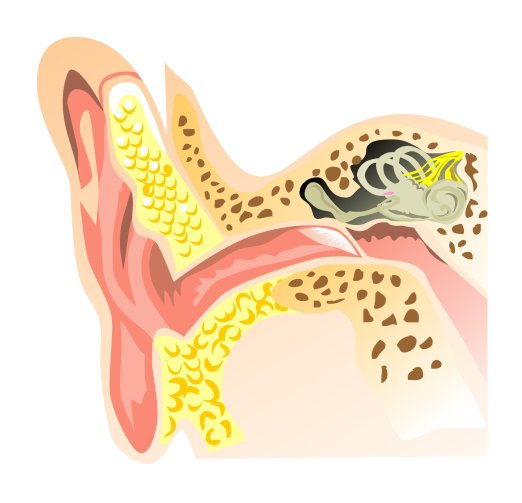
A disease that affects more than three million Americans, Otosclerosis is a disease that affects the bones of the inner and middle ear. The smallest bone in the human body, the stapes, is the bone that is specially affected by Otosclerosis. This is a result of abnormal bone modeling. Bone remodeling is a natural, life-long process in which bone tissue regenerates itself by growing new tissue, which then replaces the old tissue. However, with Otosclerosis abnormal bone remodeling happens on the stapes, and this disrupts the ability of sound to move through the middle to the inner ear. Sounds can no longer travel because the growth that develops on the stapes causes the bone to become fixed, which keeps it from vibrating. If the stapes can’t move freely and vibrate, the vibrations from the sound can no longer travel into the inner ear, and this impairs a person’s hearing.
Derived from the Greek words for “of the ear” (oto) and “abnormal hardening of body tissue” (sclerosis), it is estimated that Otosclerosis affects an estimated 10 percent of the adult Caucasian population. It has been determined that Otosclerosis can be inherited and affects mostly middle-aged, Caucasian women. Also, pregnancy often has an adversative effect, as Otosclerosis is often discovered during or after pregnancy. However, exactly why Otosclerosis happens is still unclear.
The symptoms of Otosclerosis typically include:
- Hearing loss that starts in one ear, and then moves to the other
- Gradual hearing loss, you find that you are no longer to hear low-pitched sounds
- Tinnitus
- Dizziness
- Balance problems
- Hearing problems that accelerate during pregnancy
It has been discovered that roughly 60 percent of all Otosclerosis cases are genetic. There’s a 25 percent chance of developing the disorder if one parent has Otosclerosis. Also, there is a 50 percent chance of developing otosclerosis if both parents have the disease. Going by family history, hearing tests, and a temporal bone CT scan, doctors can diagnose Otosclerosis. The treatment options vary with the severity of the disease, with mild cases using observation or a hearing aid, and severe cases using a surgical procedure (stapedectomy) to help improve or restore hearing loss.
If you are experiencing any of the listed symptoms, or if you have been diagnosed with Otosclerosis, call us today to schedule your appointment with Dr. Neil Sperling.